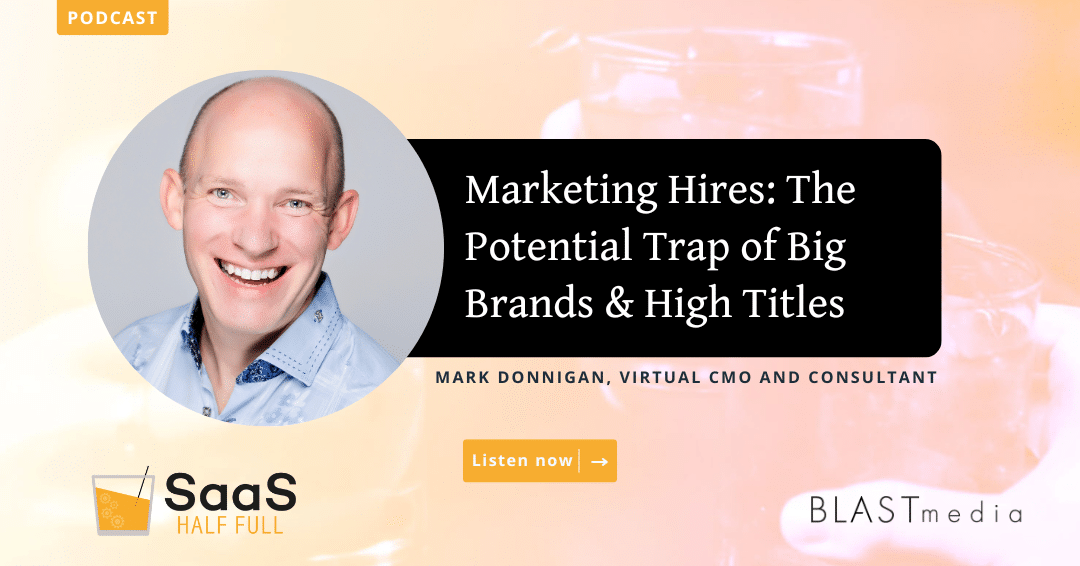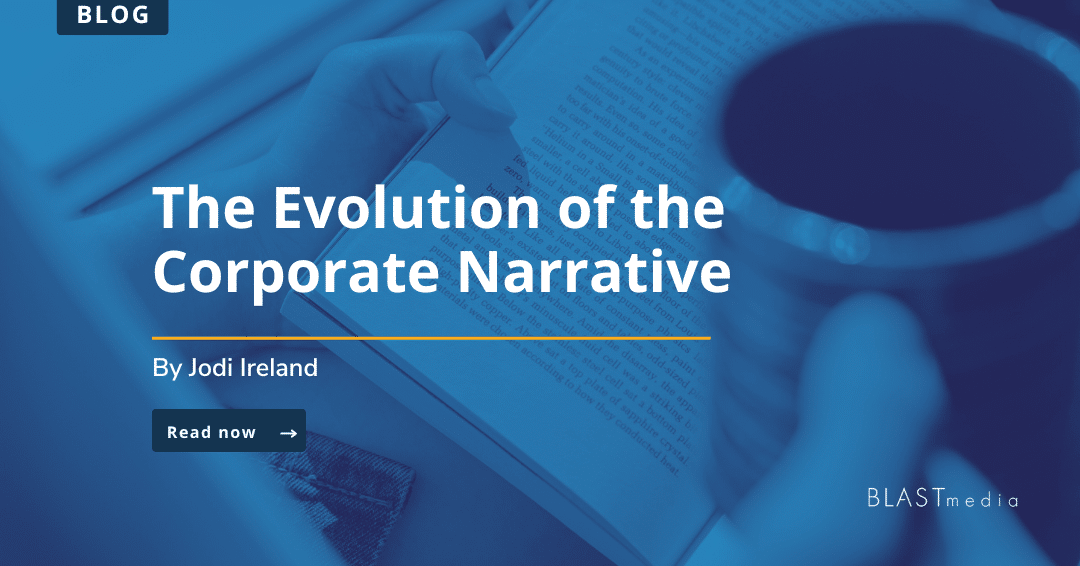At BLASTmedia, we eat, sleep and breathe SaaS media relations, so we’re always looking for better ways to work with our tech journalist counterparts. In this series, we turn the interview tables media members, talking with them on their roles, their histories and their preferences on working with brands through PR.
Our first chat is with Maria Korolov, a veteran tech journalist who contributes to several tech publications. We chat about her background in warzone journalism in the former Soviet Union (you read that right!) and how she likes to work with “super PR” contacts.
KIM: Please describe your role in a few sentences.
MARIA: For the past couple of decades, I’ve been covering business and technology. Right now, I’m a freelance writer for IDG publications, mainly CIO and CSO, for TechTarget, and for Data Center Knowledge. Occasionally I’ll write pieces for other magazines as well, such as Independent Banker.
KIM: How has your role as a tech journalist evolved?
MARIA: Every couple of years or so, I tend to take on a new beat. As a freelance writer, this is easy — I just tell myself that I’m now covering this new topic, and start pitching stories on that topic to editors. Once I’ve got a few stories out, the pitching becomes very easy because I now have a track record. Reporting becomes easier too because I can point sources to my previous stories on the topic, and have a database or sources to draw on for last-minute assignments.
So, I first started out tech journalism about 20 years ago, covering financial services. Then I wrote about other areas of enterprise technology, and business in general, then covered finance, technology and business in emerging economies like China and India. Seven years ago or so, I started cover cybersecurity heavily, then, two years ago, I moved into writing about artificial intelligence.
I also like to have big new projects that I’m doing at any particular time.
For example, in the mid-90s, I ran a business news bureau in Shanghai for five years, before returning to Massachusetts so that my kids could finish school here, instead of in China.
After I came back, I started a tech blog about virtual reality, Hypergrid Business, which, over the past 10 years, has grown to over 200 contributors, more than 3,000 published articles, and nearly 3 million unique readers. I’m always looking for contributed content for it, by the way — case studies of VR being used in business, as well as thoughts and predictions about technology in general, focusing on VR, XR, and AI. We’re indexed by Google News, so the SEO isn’t bad, and we’re fine with running reprints and linking back to contributors’ sites.
This year, I’ve tackled another big thing that I’ve been wanting to do for a very long time — fiction writing. My first two sci-fi novellas are out on Amazon, and the first one has made its Amazon category best seller list for several days in January and then again in August. I’m currently working on my third book.
KIM: How does writing about AI and cybersecurity differ from warzone journalism? How is it the same?
MARIA: I think it’s kind of like the difference between doing emergency room surgery and doing fundamental research that makes that surgery unnecessary by curing the diseases.
Or, in my case, since I’m a journalist, writing about emergency room doctors versus writing about medical researchers.
Covering the front line stuff is more exciting. You are risking your life and you’re seeing the worst that can happen, up close. But covering technology, especially the kind of stuff I’m doing now, the artificial intelligence, is like watching people build the future. It’s a very different kind of excitement. Much less hazardous, yes, but also instead of leaving me pessimistic at the end of the day, shell shocked, and with long-term PTSD, I get a sense of the boundless possibilities that we, as a species, are just starting to uncover.
Instead of interviewing mass murderers, I’m talking to people inventing the technology that will transform human civilization. I like what I’m doing now much more. But I do have to say that it’s the war stories that impress people. Hiking through a mountain range with guerilla fighters is a much cooler visual than me sitting typing at my computer.
KIM: How can PR people create working relationships with tech journalists?
MARIA: I like it when PR people, when responding to an email with a possible source, change the subject line to include the company the source works at and the topic they want to talk about because I’m writing a lot of stories at the same time, and get a LOT of irrelevant pitches that I just delete. And if you’re responding to an email I sent out with a generic subject line, if you don’t change the subject, it’ll get lost in the rest of that email chain.
I have multiple lists of people in my email system. PR sources for AI articles. PR sources for security articles. Etc… I also have a “super PR list.” If I have a lot of stories I’m working on, and time to do them, I’ll send out a note to one of the bigger PR people lists, asking for possible sources. Then I pick the best ones — enterprise users first, of course, the bigger the company, the better!
If it’s an urgent story, or one where I expect to get too many responses because it’s a hot topic, I’ll just send it to my “super PR list.” These are folks who always get back to me right away with something useful, and typically represent a wide variety of companies.
I’ve had stories where I had PR people send me more than quotes from more than 100 different executives. Since I typically can quote no more than five or so in a story, that’s a lot of PR and executive time wasted putting together quotes I won’t be able to use.
And people always ask me why I don’t use their quotes. Here’s why:
- Someone else said the same thing, and I picked the one with the punchier quotes, the most concrete examples, or they were from a more recognizable company, or just at random.
- I used their quotes, but the editors cut it out of the story because the story was too long, or because there were too many vendors in the story.
- The quote was irrelevant, too promotional, or too generic. “Breaches are bad. Companies should do something about that.” Or too stilted. Instead of saying “I like cheese” the quote says “At various times, in certain situations, some individuals have been known to prefer to consume dairy-based based nutritional products.”
- They ask to review their quotes prior to publication. Usually, I don’t do the interview at all in that case. Sometimes, the source springs it on me as a surprise at the end of the interview. I *can* send them quotes for review. But then I wind up having to spend several days going back and forth with them explaining why their rewrite of the quote made it worse, not better. If there’s a factual mistake in the quote, we’ll run a correction immediately and the corrected version will go live instantly. There’s no reason to review quotes ahead of time. I don’t do gotcha journalism. I write tech features and trend stories, and my editors ALWAYS make corrections right away. Okay, one editor took a week to fix one source’s title.
Sometimes, PR people apologize for previous bad experiences. Don’t. I’ve already forgotten all about it until you reminded me. I deal with hundreds of PR people. I don’t remember ANY names of ANYBODY. I have a database to keep track of everybody, otherwise, I’d never quote anyone by their right name. My database automatically fills in the right name, title, and company whenever I use their quotes. (I was a relational database programmer in high school and college.) There was one PR person who messed up so badly that lawyers from three companies got involved and threats of lawsuits were flying everywhere, and I had to spend a couple of days going back and forth with my magazine’s lawyers to straighten things out. I don’t remember her name. I don’t remember her company’s name. I don’t remember the name of the other company that got involved. But I can talk in detail about the Excel spreadsheet that was at the heart of the problem.
My editor at the time told me never to work with her or the company she was representing ever again. That warning was totally useless since I DON’T REMEMBER WHO THEY WERE. I can look it up, by why bother? That editor is long gone, anyway. And I’m sure everyone involved learned their lesson.
But anyway, feel free to email me to ask to be added to one of my lists, and tell me what kinds of companies you typically represent.
Oh, and pitch stories to me. I write a lot of stories. 90% of my ideas for stories come from vendor pitches. I like doing trend and features in emerging technologies, I like the latest cutting-edge stuff, that has analyst research backing up the idea that there is a trend, and enterprise users interested in talking about their experience. You can see all the stories I’ve written on my website, mariakorolov.com — I’m a little OCD about keeping the site updated, so it’s all there.
KIM: What tech trends are exciting you right now and why?
MARIA: AI and ML. It’s going to change everything.
KIM: What tech buzzwords are you tired of hearing?
MARIA: Blockchain and Bitcoin. I know the math is cool, but I’m still seeing zero business value.
KIM: If you could be a fly on the wall in the boardroom of any tech company, which would it be and why?
MARIA: The guys building quantum computers at Google and IBM, probably. And their AI labs. Also, I’m curious to find out what Magic Leap is really up to. And what Apple’s XR plans are.




